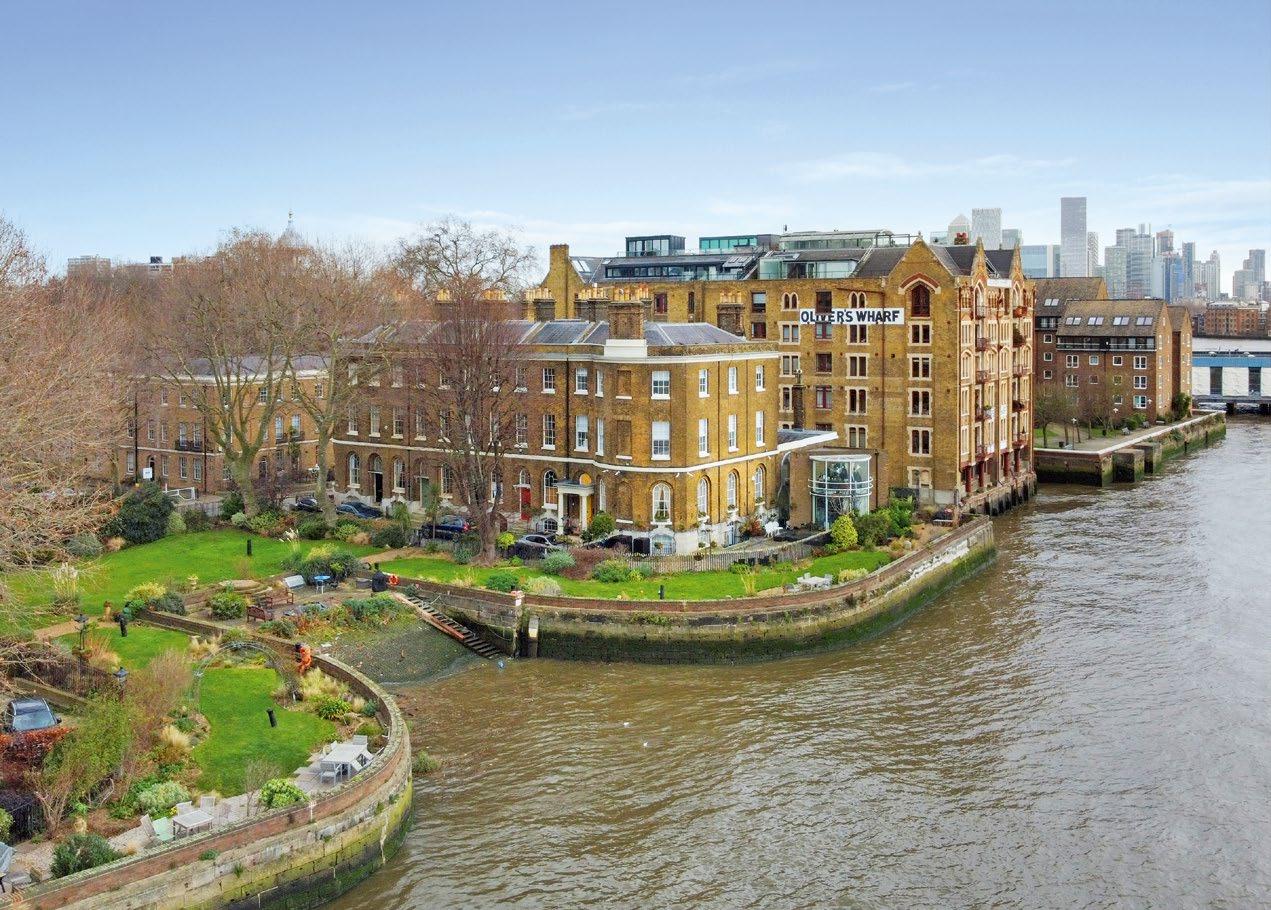EVERY WEEK MAY 3, 2023
How will you mark the coronation?
Carla Carlisle: ‘We’re lucky to have him as King’
Everest at 70 and Emma Tennant at 80 Badminton, Landseer and London in layers





















EVERY WEEK MAY 3, 2023
Carla Carlisle: ‘We’re lucky to have him as King’
Everest at 70 and Emma Tennant at 80 Badminton, Landseer and London in layers





















My first visit to London was on January 30, 1965. I was not yet a year old, but my parents took me to the state funeral of Sir Winston Churchill. I was there. My next occasion to visit was at the age of six, when I approached Buckingham Palace and took care with my feet not to stand on the lines of the squares (I still do, thanks to A. A. Milne).
London, as our capital city, has everything and is everything. It, alone, is the reason most people visit our England from abroad. It is a multicultural curdle of the entire world, with more than one-third foreign-born—more than 270 different nationalities call it home. You can eat almost every culinary dish ever served within its boundaries.
But London is built on ancient foundations, from Roman conquerors 2,000 years ago to Norman invaders 1,000 years ago. Our monarchy, as we will see again with the coronation this weekend, has long bestrode the capital, building palaces and cathedrals, yet, it also remains quirky and undisciplined.
There are green spaces and nightclubs in London, historic treasures and holistic spas; it is a city of villages and economic power, of museums and world-class galleries. It is the city that has given the world two-ply loo paper and Shakespeare’s plays.
It is also a place I once didn’t like, but to know it is to love it and I do now. Hopefully, these pages following—in a one-off iteration of our monthly LONDON LIFE section, for domestic and international travellers alike—will help persuade you why London remains the greatest city on earth. Because it’s not always the most obvious things that are its greatest charms.
Mark Hedges, Editor-in-Chief of COUNTRY LIFE The Thames below Westminster , 1871, Claude Monet/Bridgeman Images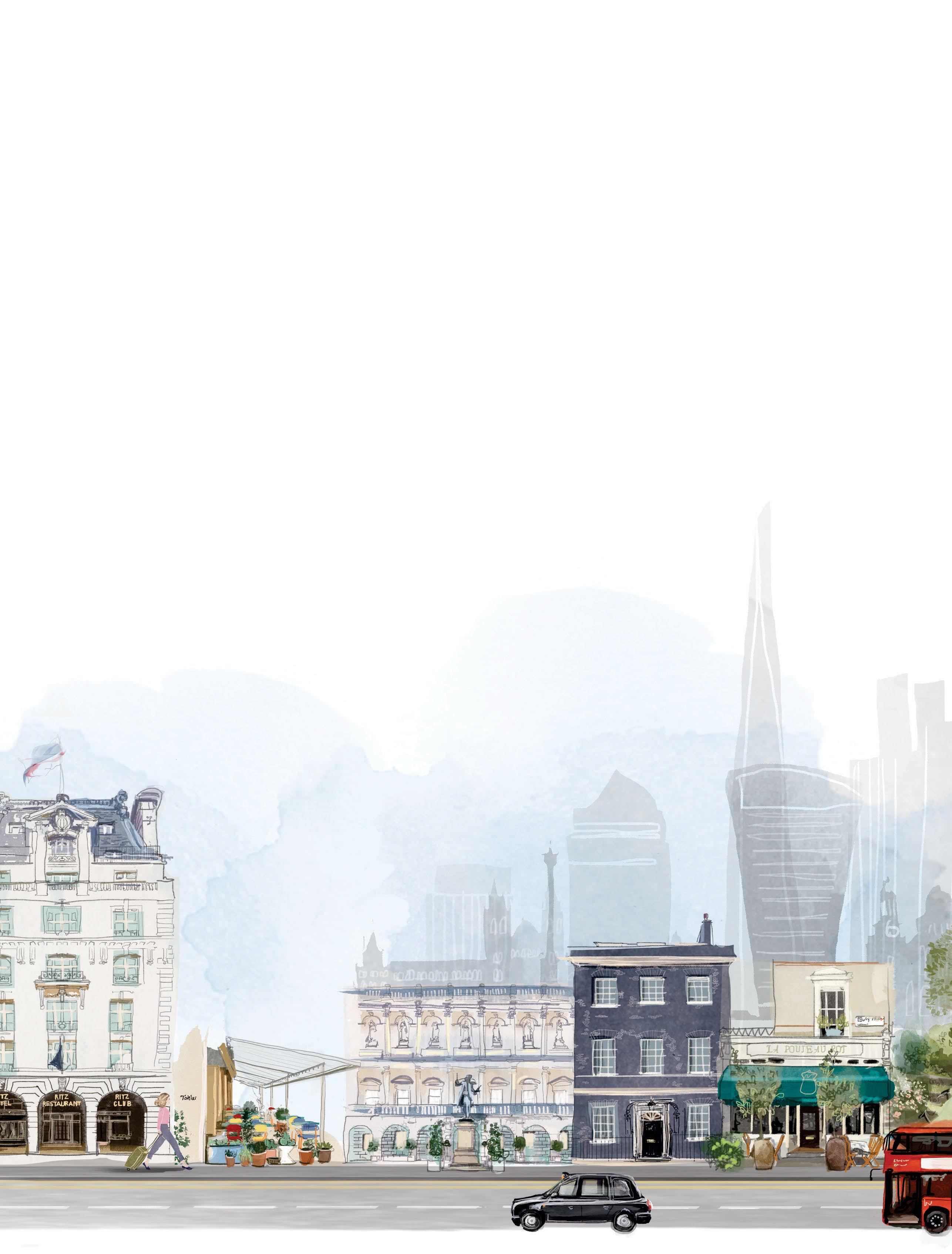
Illustration


 by Bryony Fripp
by Bryony Fripp
ASK another Londoner to describe a few perfect days in town and their ideas will never line up with yours. London is one of the broadest urban churches on earth, and the people who live here, including me, are guilty of kippering in their own narrow habits. Even worse, more often than not, I am simply at home, rather than climbing the spiral staircase at a glasshouse in Kew or squinting at Big Ben. But this itinerary is what I wish I were doing. The writer Dorothy L. Sayers once said something to the effect that when she was stuck at her desk, she liked to lavish the fortune of the hero she created, Lord Peter Wimsey. ‘When I was dissatisfied with my single unfurnished room, I took a luxurious flat for him in Piccadilly,’ she said. ‘When my cheap rug got a hole in it, I ordered him an Aubusson carpet. When I had no money to pay my bus fare, I presented him with a Daimler double-six, upholstered in a style of sober magnificence, and when I felt dull I let him drive it.’ Reader, pull around your Daimler.
Emerging into the pinball grandeur of Piccadilly at about lunchtime, you’re spotted by a bellhop around the corner on Arlington Street, who reels you in and guides you under a shell of navy and gold awning to The Ritz (www.theritzlondon. com). The Ritz is a gilded hotel close enough to Buckingham Palace to make a telephone out of tins and string. There are families here for afternoon tea, choosing scones in the Palm Court, and young couples having bucket-list lunches in the frescoed dining room, as well as guests climbing the stairs to Louis XVIstyle bedrooms. The variety keeps the atmosphere moving.
After leaving your luggage in a suite with chintz sofas, head south on foot to Pall Mall. Walk past the university clubs and the lions in Trafalgar Square, then along the Strand until you reach Toklas, a mid-century modern restaurant in a Brutalist building slipped into a side street a few steps up from the River Thames (www.toklaslondon.com). Finish whole fried artichokes and guinea fowl over chickpeas, then go downstairs to the in-house bakery for takeaway rounds of Basque cheesecake. A few minutes’ walk to the east will take you to the wrought-iron entrance of Inner Temple Gardens, a vast private garden freckled with wildflowers
that’s open to the public on weekdays during lunchtimes (www.innertemple.org.uk/estategarden/the-inner-temple-garden). No one ever seems to be in there except for me—and now you. Find a bench, open your box of cheesecake and enjoy the foxgloves.
On the way back to the hotel, stop by the Royal Academy (www.royalacademy.org.uk). After soaking up the art, cross the street and return to your bedroom for a bath. Open the Champagne that was left in the ice bucket. Put on clean socks and walk three minutes to a table at Wilton’s, that buttoned-up tentpole of British cooking where you can sink into a green-velvet booth and feel taken in hand by the confident servers (www.wiltons. co.uk). Have the cheese soufflé, the French beans and the Dover sole. Eavesdrop on anyone who looks interesting. And so to bed.
Arrive early for breakfast, so there is time to linger—the bright, park-facing dining room at The Ritz looks like something out of a period drama and the Michelin-starred kitchen serves a full English as good as they come. Bring a book.
The walk to the Garden Museum (www. gardenmuseum.org.uk) takes about half an
hour and will lead you past a bumper crop of the blue-chip sights: St James’s Palace and St James’s Park, Downing Street, Westminster Abbey, Parliament and Big Ben— more limned than usual after its £80 million facelift. The museum is on the other side of the river, housed in the deconsecrated church of St Mary-at-Lambeth, so arte facts and botanical artwork are set against a backdrop of Kentish ragstone walls and pointed arches. Finished? Hail a taxi outside on Lambeth Road.
The Pimlico Farmers Market will be in full swing when you arrive for lunch at La Poule au Pot, the French bistro with tables that spread into Orange Square in good weather (www.poule aupot.co.uk). Get the three-course set menu for £39.95, which comes with a side dish of vegetables and a steaming bowl of gratin potatoes showered in chives. Mop up the latter with nubs of baguette, drink the house red wine from a large unlabelled bottle (billed by the inch), ease into your chair and decide that London is the only place for you.
When they need the table back, set out straight ahead on Pimlico Road, past the sublime Royal Hospital to the left, a home for veterans built in the 17th century by Sir Christopher Wren. After 15 minutes, you’ll come to the exterior brick wall of the Chelsea Physic Garden, a four-acre plot staked out by a group of apothecaries in 1673, devoted to the growing of medicinal plants (www. chelseaphysicgarden.co.uk). Peruse the antidotes to coughs (tincture of the Pasque flower) and fevers (infusion from the roots
Angelica archangelica), as well as worms in children (lavender cotton).

Stop in at John Sandoe, the bookshop spread across three cottages, on the way back to Orange Square (www.johnsandoe. com). This time, you have a reservation at Hunan, the Chinese restaurant where there isn’t a menu, only a set cost and a brief conversation with the server about your preferences (www.hunan london.com). Plate after plate—normally 10 to 20—sail out of the kitchen, with surprises such as deep-fried green beans and chilli, pumpkin dumplings, and crispy duck. If you’re scraping the bottom of a particular dish, your server will offer to bring more, until you twitch your napkin in surrender and roll home.

Take it easy today, because you overdid it on the banana fritters last night. Make your way up to Hampstead Heath for a couple of hours on the trails, observing the shoals of lurchers and dachshunds on breed-specific group walks. If the weather is good and you are graced with that particular type of bravery, book a slot in advance at one of the swimming ponds.
When you have your appetite back, leave the heath by the eastern perimeter and head to The Bull & Last across the road (www.thebullandlast.co.uk). On any Sunday, the pub will be boiling over with yawning couples and families trailing flakes of mud. Get a roast— it doesn’t especially matter which one, because all of them come with the crispiest
golden potatoes you’ve ever eaten in your life. They hold up beautifully to the thyme-laced gravy (don’t bother skimping; they’ll bring more). If you’re already planning another trip, there are seven superb bedrooms upstairs— small, panelled and perfectly formed, with views of the Hampstead rooftops.

Enjoy your silver toast rack for a final morning, then ask the front desk to store your luggage. Taxi or tube (it’s about 40 minutes either way) west to Kew, the suburban village set on the Thames with a storybook cricket green and Kew Gardens (www.kew. org). Explore the Palm House, where the rainforest interiors smell transportingly like the tropics, and the Dutch-style Kew Palace, which was used by George III and his family in the 18th and 19th centuries. Climb a spiral staircase to the second floor of the extraordinarily expansive glasshouse, Temperate House, and look out over 10,000 specimens from around the world.
Hop in a taxi for 15 minutes south to your last lunch at Petersham Nurseries, the famed plant shop and café with a dirt floor and bougainvillea blooming overhead (www. petershamnurseries.com). The Italian menu is concise and crowd-pleasing: wobbly polenta riddled with Fontina; tortellini under a hill of black truffle and ricotta; rabbit with tomatoes and sourdough crumbs. As you make your way through the pots of herbaceous perennials on the way out, pick up a tub of delphiniums or some hardy campanula— an ongoing token of your weekend away.


FOR the past two millennia, London has been in the process of almost unceasing change. The overarching narrative over that time has been of expansion driven by prosperity and the inexorable growth of population. At the same time, the changing demands of its economic life and new technologies—most recently the train and the car—have repeatedly re-shaped the urban fabric and shifted the focus of activity within it. No less transformative have been the intermittent periods of decline and architectural destruction that have punctuated the history of the city, from the collapse of Roman rule to the Black Death and from the Great Fire of London in 1666 to the Blitz of the Second World War.
Despite such intensive redevelopment over such an enormous period of time, the historic fabric of London remains extraordinarily tenacious. Even today, when new developments clear large areas of land, the shadow of the past often remains discernible. That’s most obvious when an important building, such as a church, or monument survives the sweeping tide of change. History can find expression in much more subtle ways, however, as for example in the name of a place or the line of a street. The ‘old wyck’ or ‘old settlement’ of Aldwych, for instance, probably refers to the site of an abandoned AngloSaxon settlement outside the walls of the Roman city, whereas the nearby beach, on which ships could be drawn up from the
Thames, has lent its name to the thoroughfare known as the Strand.
It’s fascinating to go in search of the vestiges of history that have been fossilised within the familiar streetscape. It brings home the extent to which London has been cumulatively altered over time. What follows is an attempt to present a selection of such survivals in chronological order through the prism of different ruling dynasties from the Roman period onwards. It’s inevitable that much more survives from the recent than the distant past. Nevertheless, there is something to enjoy from every epoch. When you turn over the page, hold the magazine up vertically and you will be able to see the layers by which London has built up over time; it’s London represented as a lasagne.
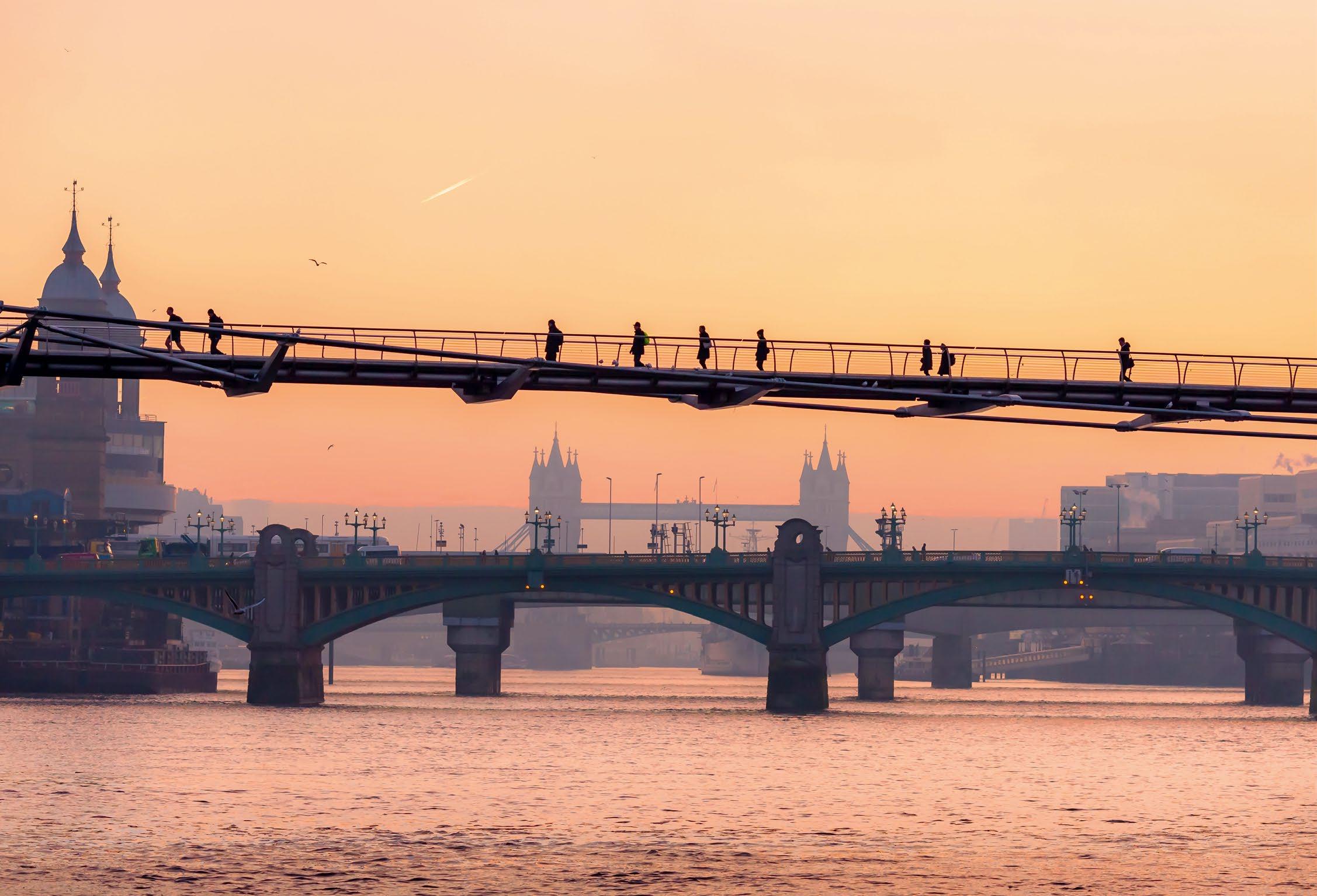


The excavated remains of the Mithraeum ( right ) or Temple of Mithras, built in the 3rd century AD
An early 11th-century Viking gravestone ( right ) excavated next to St Paul’s in 1852. It was originally painted. A runic inscription names Ginna and Toki
A 1390s angel roof, one of the wonders of English medieval carpentry, spans Westminster Hall ( right ), begun in 1097 by William Rufus
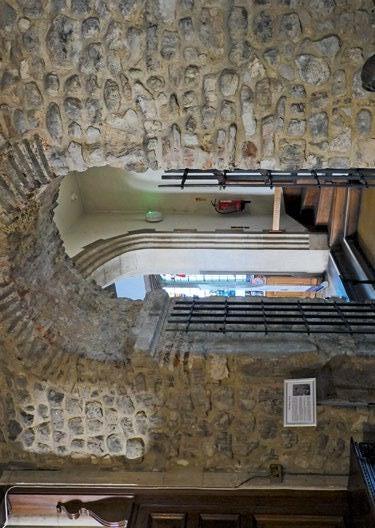
The Jerusalem Chamber, Westminster Abbey ( right ), the room where Henry IV died in 1413






The adapted 15thcentury Charterhouse hall ( right ). The building was founded in 1371 as a Carthusian monastery
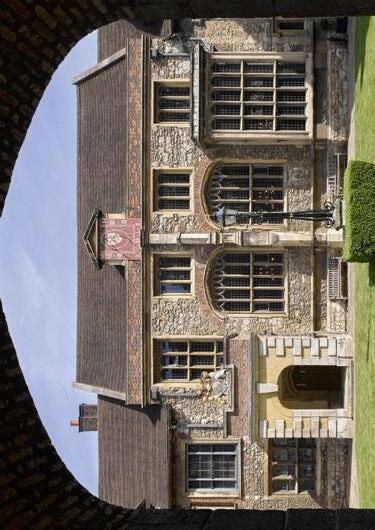
The Roman city wall built in about AD 200 ( left ) and the hypocaust of the Billingsgate baths ( right ), added in about AD 250 to an earlier house
The Saxon arch in All Hallows by the Tower ( left ) and a penny of Alfred the Great ( right ), dated about 880. The monogram shows that it was minted in ‘Londonia’
The Tower of London, begun by William the Conqueror to control the city ( left ). The choir of St Bartholomew the Great ( right ), founded in 1123
Temple Church nave ( left ), consecrated in 1185 by the Patriarch of Jerusalem. The Chapel of St Mary Undercroft, Palace of Westminster ( right ), begun in 1297
The 15th-century hall of Guildhall ( left ) and the tower of St Sepulchre ( right ).


In the foreground is a surviving 18thcentury watchhouse
Romans AD 43 to AD 410

Emperor Claudius

Anglo- Saxon AD 410 to 1066
Edward the Confessor
Norman 1066 to 1154

William the Conqueror




Planta- genets 1154 to 1399

Richard II

Lancaster/ York 1399 to 1485
Henry IV
Lambeth Palace, the London seat of the Archishop of Canterbury ( right ). The gatehouse was built by Cardinal Morton in about 1490

The Banqueting Hall on Whitehall ( right ) completed in 1622. It was from a window of this building that Charles I stepped to his execution in 1649
The Mansion House in the City ( right ), seat of the Lord Mayor, begun in 1739
The House of Lords ( right ), dominated by the Sovereign’s Throne, designed by A. W. N. Pugin and first used in 1852
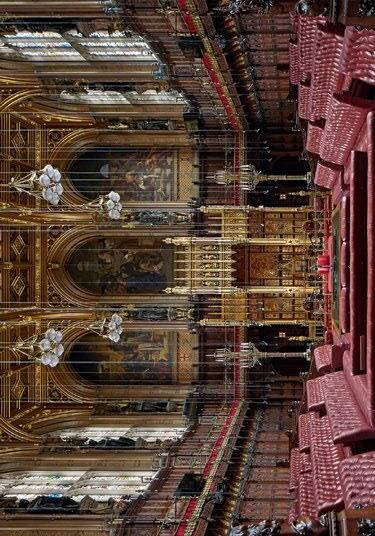
The Bank of England ( right ), as remodelled by Herbert Baker from 1925. He preserved the solid enclosing wall at ground level from the earlier building

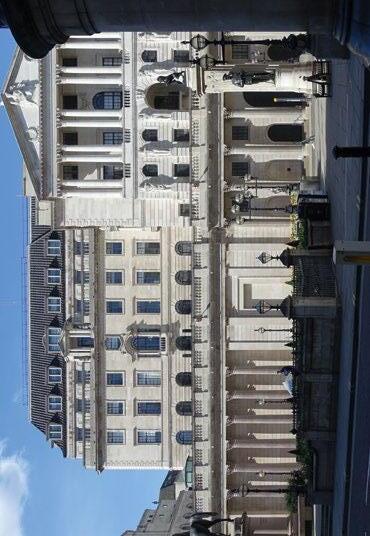
The recently opened Elizabeth Line ( right ) is the most recent addition to London’s public-transport network

St James’ Palace ( left ), begun by Henry VIII, and the high vault of Henry VII’s Chapel, Westminster Abbey ( right ), begun in 1503
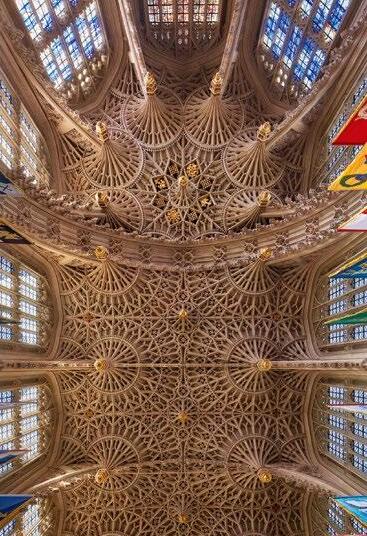
London’s cathedral, St Paul’s ( left ), was completed in 1710. The 1624 screen of Old Hall, Lincoln’s Inn Fields ( right )


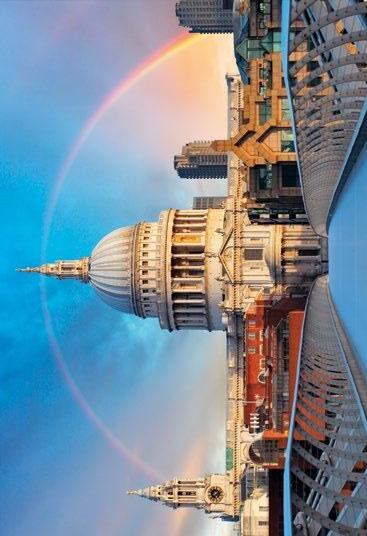

The Painted Hall, Greenwich ( left ), decorated by James Thornhill between 1708 and 1726. Somerset House ( right ), begun in 1776 by William Chambers


Sir George Gilbert Scott’s St Pancras Station of 1874 ( left ) and the Royal Albert Hall ( right ), opened by Queen Victoria in 1871

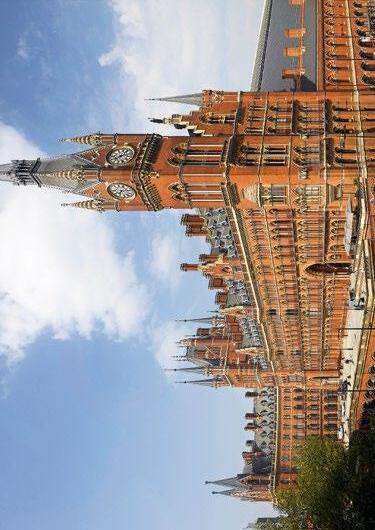
Admiralty Arch ( left ), completed in 1912 as the triumphal entrance to the Mall, and Sir Giles Gilbert Scott’s Battersea Power Station ( right ) begun in 1929

The Brutalist National Theatre ( left ), completed in 1976 by Denys Lasdun. The Shard ( right ), at 1,016ft briefly the tallest building in Europe

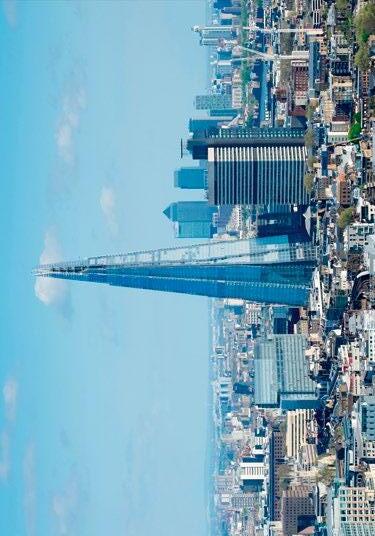
Tudor 1485 to 1603

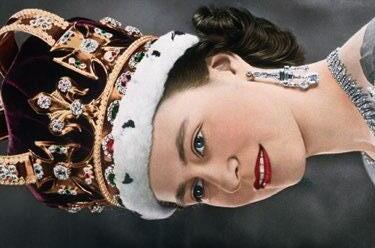
Elizabeth I

Stuart 1603 to 1714
James I

Hanoverian 1714 to 1837
George I
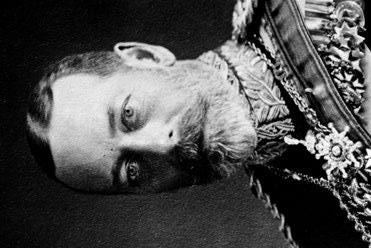
Victorian 1837 to 1901
Victoria
Edwardian 1901 to the Second World War George V

Elizabethan Second World War to 2022
Elizabeth II

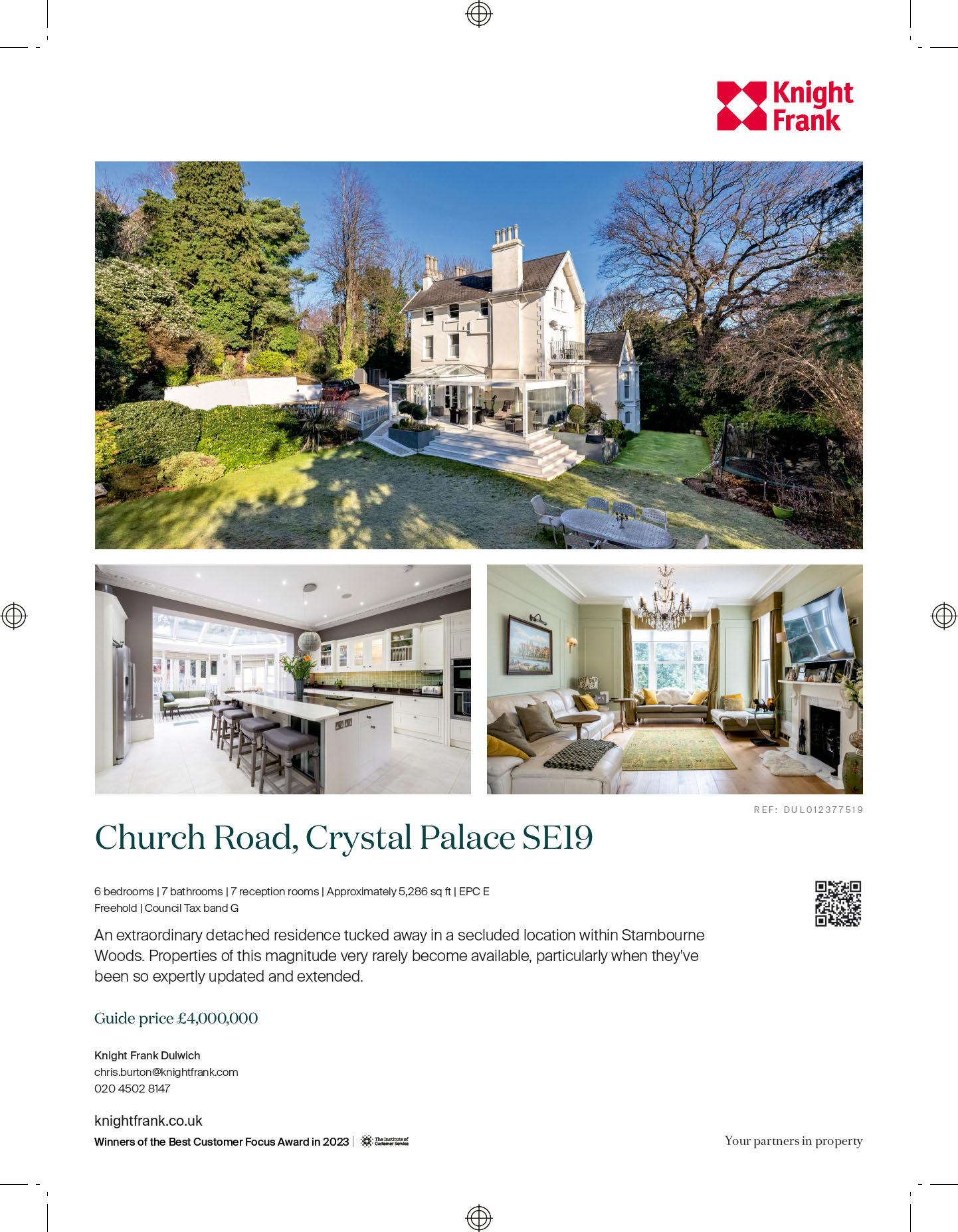

Zeb Soanes

1. Master of Suspense (Alfred Hitchcock) by Antony Donaldson, Gainsborough Studios, Hackney
An 18-ton, solid-steel head on the site of the former Gainsborough Film Studios, where Alfred Hitchcock made 12 films, including The Lady Vanishes
2. Statue of the Dead Christ by unknown, Mercers’ Hall (by appointment)
Buried beneath the floor of the Mercers’ Chapel by bomb damage and found in 1954, this is one of the most important pieces of sculpture to survive the Reformation
3. Opening the Lock Gate by Ian RankBroadley, City Road, Islington
This commemorates the bicentenary of the
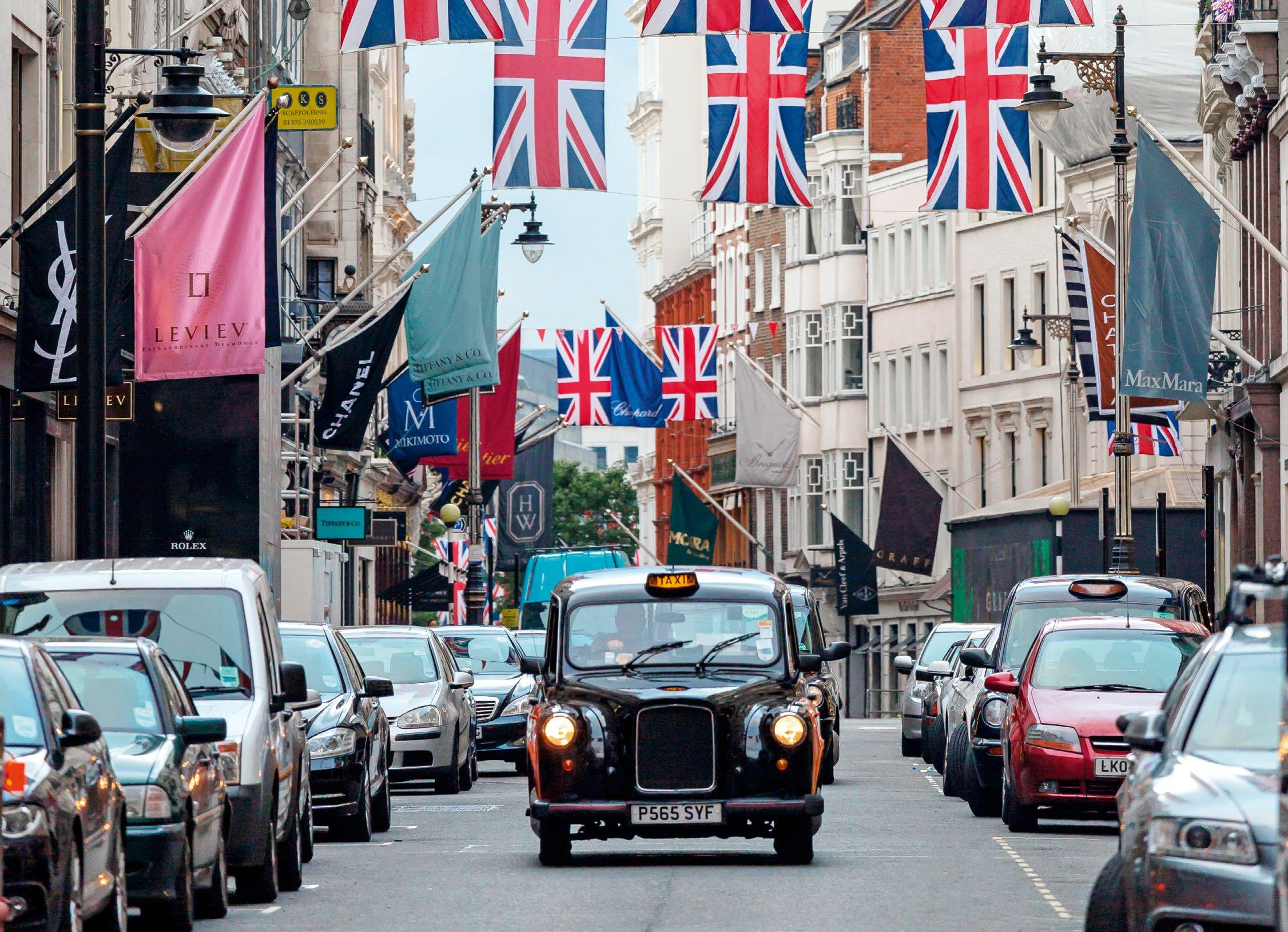
Regent’s Canal and the toil of the canal workers responsible for the movement of goods around the country, who have largely been forgotten. The artist wanted to depict the men shirtless, but this was considered too racy
4. Sir John Betjeman by Martin Jennings, St Pancras station
A joyous piece of public art that invites you to gaze aloft with Sir John at the magnificent Victorian station he campaigned to save
5. Hodge the Cat by Jon Bickley, Gough Square
Samuel Johnson’s black cat sits on top of the Dictionary and next to empty oyster shells, with the inscription ‘a very fine cat indeed’
6. Peter Pan by Sir George Frampton, Kensington Gardens
J. M. Barrie erected this statue one night, advertising its arrival in The Times, so it appeared to children as if fairies had put it in place
7. George Orwell by Martin Jennings, BBC Broadcasting House, Oxford Circus
I remember this being unveiled, mainly for its timely inscription from Orwell: ‘If liberty means anything at all, it means the right to tell people what they do not want to hear’
8. Queen Victoria by Princess Louise, Duchess of Argyll, near Kensington Palace
Sculpted by Victoria’s fourth daughter, the white marble statue depicts the sovereign aged 18 in her coronation robes
9. David by Michelangelo (cast made by Clemente Papi in 1856), V&A Museum
Being made of plaster not marble in no way reduces the impact of Michelangelo’s artistry and skill. Marvel, too, at Papi’s skill in making a copy using the ancient ‘lost-wax’ technique
10. Jeté by Enzo Plazzotta, Millbank
Noteworthy for the deceptive lightness its artist achieves in bronze, it depicts English
The choice of things to do, eat and see in London can be overwhelming, so we’ve made it easier for you by asking friends of the magazine for their favourite things
ballet dancer David Wall, who, aged 21, became the youngest male principal dancer in the history of the Royal Ballet. Encore! Zeb Soanes is an author and broadcaster

1. A Woman Bathing in a Stream by Rembrandt, National Gallery
No Baroque artist depicted women better than Rembrandt. Here, he has tenderly shown us a private moment of complete absorption.
2. Sarcophagus of Seti I, the Sir John Soane Museum
An ancient Egyptian marvel, the sarcophagus of Pharaoh Seti I, father to Ramesses II
3. Ascension with Christ Giving the Keys to Peter by Donatello, V&A Donatello was arguably the most important sculptor of the western world and this painting reveals his innovative rilievo schiacciato
8. Riesner Desk of comte d’Orsay, the Wallace Collection
A simplified version of a desk made for Louis XV that was delivered to Versailles in 1769 Rose Balston is an art historian and the founder of Artscapes (www.artscapesuk.com)
Charles Baker
1. The Albion, Islington The back garden is one of the loveliest living rooms in the capital, packed with a youngish Islington crowd
2. Bulls Head, Chiswick
As the River Thames laps by your side, you feel as if you could be in Hogarth’s London
3. The Southampton Arms, Kentish Town/Gospel Oak
London’s best pub? Many think so. Despite its city-wide reputation, it’s still a locals’ inn
4. The King and Queen, Fitzrovia
I can always find a table here at this oldfashioned Fitzrovia pub, which is invaluable
5. Hermits Cave, Camberwell
A timewarp where the crowd hasn’t changed for 30 years. An enjoyably edgy ambience
6. Prince Edward, Holloway
Beautiful Victorian pub off the Holloway Road with an original interior and pints at less than a fiver. Don’t tell anyone about it
In Room 36 at the National Gallery, two paintings by Turner hang alongside two by 17th-century French landscape painter Claude Lorrain. Dido building Carthage by the former is the first in which he set out to match the latter. In his will, Turner specified that he would bequeath it and Sun Rising through Vapour to the nation, on the understanding that they should be displayed alongside two of Lorrain’s paintings
9. The Holly Bush, Hampstead

This Hampstead icon is too packed out on the weekends, but is simply unbeatable on a Tuesday or Wednesday afternoon
10. The Hemingford, Islington
Top-tier Irish pub, with some of the best Guinness this side of Dublin and more than decent Thai food
Charles Baker is editor of ‘The Fence’

Ginnie Chadwyck-Healey
1. Dar Leone, Islington
4. Arab Hall at Leighton House
Escape into a world of gold gilded domes, Iznik and Damascene tiles, a tinkling fountain, mashrabiya screens from Cairo and a treasure trove of designs from Victorian artists
5. Single Form (Memorial) by Barbara Hepworth, Battersea Park
Beautiful to see amid Nature, deepening the connection her abstracts have to the landscape
6. Allegory of Painting by Artemisia Gentileschi, National Gallery
A shout of passion that tells us Gentileschi was a sophisticated, talented and clever artist willing to take her rightful place in a man’s world
7. Portrait of Thomas Coram by William Hogarth, Foundling Museum
A fantastically progressive portrait, where— true to form—Hogarth throws the rule book out of the window, capturing the spirit of the determined and rambunctious Capt Coram
9. Yinka Shonibare Library, Tate Modern
More than 6,000 books all covered in Nigerian-born Shonibare’s distinctive Dutch wax printed cotton textile
10. The Great Model by Sir Christopher Wren, St Paul’s Cathedral
An immaculate, large-scale wooden creation made as part of Wren’s pitch for the new St Paul’s Cathedral, after the 1666 Great Fire
7. St John’s Tavern, Archway
Simply the best gastropub around. A beautiful dining room, too
8. Blue Posts, Chinatown
Interior unchanged since the Lady Chatterley trial, but, nonetheless, it’s where the cool boys and girls come. Very, very trendy
A jewellery, textiles, homeware haven, known for bold and vibrant prints. The pieces are all chosen by Sierra LeoneanAmerican Isatu Funna
2. Pentreath & Hall, Bloomsbury
Inside Ben Pentreath and Bridie Hall’s treasure trove, there is a trinket for everyone. The design duo’s talents span architecture, interiors and the decorative arts, bringing a beautifully eclectic 360˚-approach to their work
3. Algerian Coffee Stores, Soho
The only place to buy coffee in London: there really is a coffee bean for every occasion and every set of taste buds
4. Liberty London, Soho
Go for the building alone. The buyers go above and beyond with their selections each season. It’s simply heaven
5. John Bell & Croyden, Marylebone
This pharmacist is an impressive 200 years old and boasts a Royal Warrant. This is where I go to marvel at the world of health, beauty and wellbeing under one roof
6. Ainsworths, Marylebone
Reputation precedes this small, but savvy business; the team is superb, friendly, informative and always on hand to offer advice over the phone if you cannot make it in person. I’ve used the shop for children’s teething, eczema, anxiety, coughs—all those moments when homoeopathy can help

‘He throws the rule book out of the window, capturing the spirit of the rambunctious Coram’
7. Lisa Redman, Notting Hill

My hidden secret for sustainable and bespoke garments, as well as perfectly tweaked-andtailored items that you want to update. Lisa and her on-site seamstress team are magicians
8. KJ’s Laundry, Marylebone

One of the best places for clothing that none of your friends will have—and if you love an Ulla Johnson blouse
9. Dinosaur Designs, Soho
Colour… and more colour! Chunky, brave jewellery and homeware designs, made of resin
10. With Nothing Underneath, Belgravia
Pip Durell excels at excellently priced and tailored shirts for women. One is not enough Ginnie Chadwyck-Healey is a writer, stylist and sustainable-fashion advocate
Rosie Paterson
1. Claridge’s, Mayfair
If I could persuade Claridge’s to let me move in, I’d be there in a shot, bags in hand. ‘But it’s so English,’ a Swiss hotelier said to me. ‘Exactly.’ I replied. Claridge’s magical concoction of equal amounts glamour and quirk is yet to be replicated to the same effect anywhere else in the world
2. NoMad, Covent Garden
There are myriad reasons to stay at NoMad, but the primary one is surely its Royal Opera House package, which includes an overnight stay, tickets to a performance, a backstage tour and the opportunity to watch a rehearsal
3. Lime Tree Hotel, Belgravia

The Lime Tree is a unicorn on the London hotel scene, affordable and stylish. Ask for Room 42 (the Georgian townhouse has 26 in total)
4. Ham Yard Hotel, Soho
A glamorous cornucopia of colour and print, with a popular bar and one of London’s best and most inventive afternoon teas
5. Beaverbrook Town House, Chelsea
Guests staying in one of the hotel’s 14 suites enjoy access to the Grade II-listed Cadogan Gardens. Said suites are named after London theatres and more than 500 posters, vintage illustrations and photographs cover their walls
6. The Lost Poet, Notting Hill
This four-bedroom, guesthouse-style hotel is perfect for multi-generational travellers and groups. There’s an automated check-in and check-out system, too, which means you can come and go as you please
7. Artist Residence London, Pimlico
This shabby-chic, 10-bedroom bolthole is only a 20-minute walk away from Buckingham Palace and Chelsea’s Saatchi Gallery. Dogs are welcome in several of the rooms
8. Henrietta Hotel, Covent Garden
Even the cosiest rooms at the Henrietta, which occupies two adjoining Victorian townhouses, have two-person showers and his-and-her sinks
9. The Rookery, Clerkenwell
Blink and you’ll miss the door to The Rookery, a short pitter-patter from St Paul’s Cathedral. The attention to Georgian detail is so great that the three-storey hotel could easily double as a period-drama backdrop, but it’s worth noting that this means there is no lift
10. The Stafford, St James’s
What makes The Stafford special is that you can only find it if you know it’s there; the building hums with a sense of a shared secret. The American Bar martinis are the best in the city Rosie Paterson is Travel and Lifestyle Editor of C OUNTRY L IFE
Tom Parker Bowles

1. The Cow, Notting Hill
There’s a reason this has been going strong for more than 25 years. Perfect Guinness, cool, briny oysters and lovely service. A west London classic
2. The River Cafe, Hammersmith
Not exactly cheap, but can you put a price on unfiltered joy? Day or night, inside or out, the food—simple, yet sensational Italian—is wonderful; the service as warm as a Siena dusk
3. Bouchon Racine, Farringdon
After 10 long years, Henry Harris is back. And this time, he’s gone East. Expect bistro classics (snails, tete de veau, steak au poivre), immaculately done. Hell of a wine list, too
4. 101 Thai Kitchen, Stamford Brook
Small and reassuringly laid back, this west London Thai serves up the real thing, often eye-searingly hot, but never less than thrilling. Isaan and South Thai dishes are a speciality
5. Gymkhana, St James’s/Mayfair
Excellent Indian food, in mahogany-panelled surroundings. A trail blazer, still one of the best
6. A Wong, Pimlico
Some of the most inventive and downright brilliant modern regional Chinese cooking
I’ve eaten anywhere. Andrew Wong is a genius
7. Wilton’s, St James’s
Smart, serious and timeless. Ask for a booth, 12 native oysters, jellied beef consommé. And Dover sole, on the bone. Classic, but peerless
8. St John, Farringdon
Bone marrow on toast is Fergus Henderson’s great gift to the gastronomic world. But there’s so much more. Trotter pies, white cabbage with brown shrimp, the best rarebit in town
9. Quo Vadis, Soho
Start with a smoked-eel sandwich or two, before moving onto a pie, perhaps, or asparagus rolled in brik pastry. Like its executive chef, Jeremy Lee, Quo Vadis is eternally divine
10. Bentley’s Oyster Bar & Grill, Mayfair
Come for the oysters, beautifully shucked. Stay for the fish pie, baked scallops, and langoustines. A London temple to seafood
Tom Parker Bowles is a writer and food critic

Charlotte Mullins

1. The Courtauld, Strand
The Impressionist and PostImpressionist paintings are world class (Édouard Manet’s A Bar at the Folies-Bergère ; Paul Cézanne’s Mont SaintVictoire with Large Pine ; Vincent van Gogh’s Self-Portrait with Bandaged Ear)
2. The Fan Museum, Greenwich
A hidden gem that looks at the long international history of the fan. Highlights include fans designed by artists Paul Gauguin, Walter Sickert and Salvador Dalí
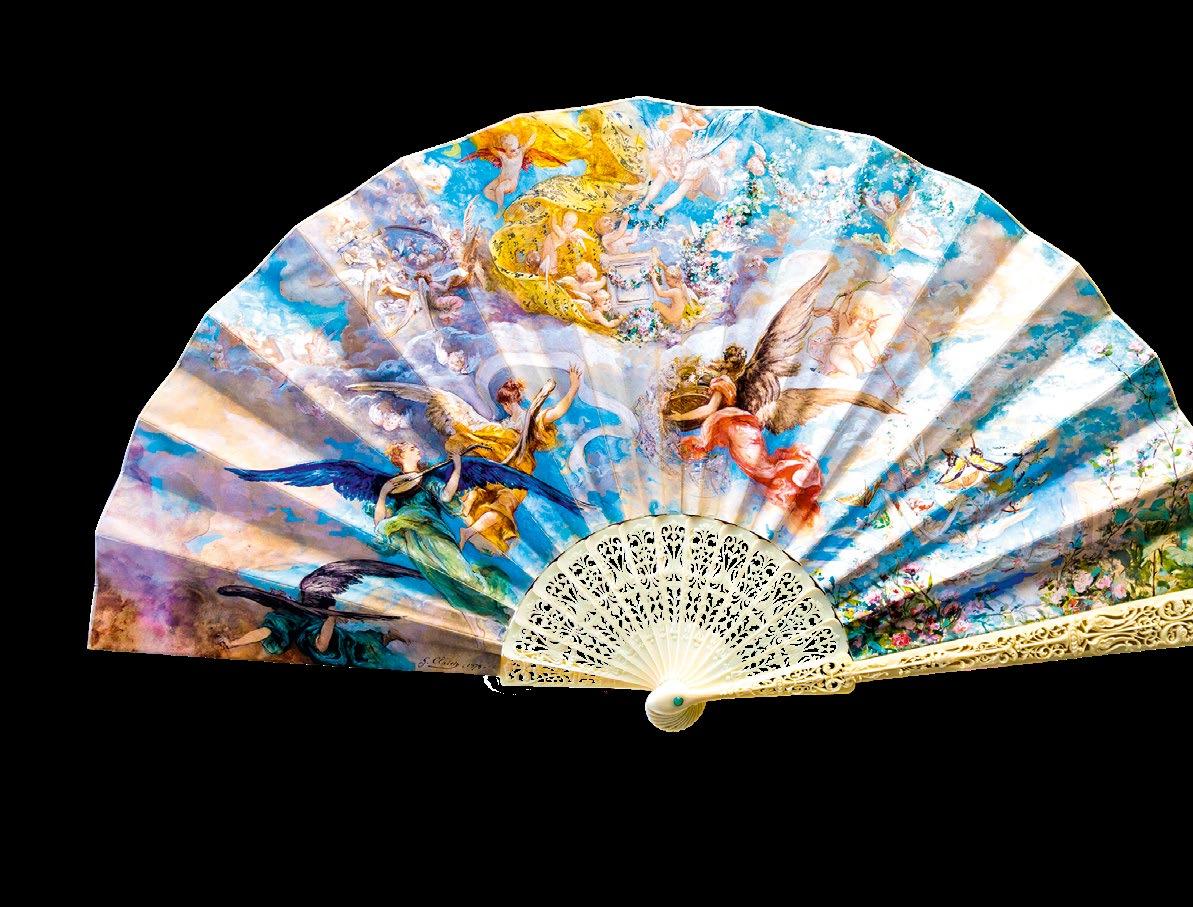
3. Foundling Museum, Brunswick Square
Thomas Coram opened the Foundling Hospital in 1739 to help children in need. With Hogarth and Handel among his supporters, the museum has an exceptional collection
4. Sir John Soane’s Museum, Lincoln’s Inn Fields
Soane’s former home, stuffed full of classical sculptures, an ancient Egyptian tomb and models of Soane’s own projects (including the Bank of England). His impressive art collec tion includes all eight paintings of Hogarth’s masterpiece ‘The Rake’s Progress’
5. Freud Museum, Belsize Park
Alongside the psychoanalyst’s famous couch and personal collection of books and sculptures are temporary exhibitions such as ‘Freud’s Antiquity: Object, Idea, Desire’ (until July 16)
specimen displays, as well as its most famous taxidermy item, an overstuffed walrus
10. Strawberry Hill House, Twickenham
This Gothic crenellated confection was the home of 18th-century collector and novelist Horace Walpole and is full of rare delights Charlotte Mullins is an art historian
Simon Jenkins

1. The City from Waterloo Bridge
6. Hogarth’s House, Chiswick
The country retreat of Hogarth has been open to the public since 1904. His studio at the end of the garden no longer exists, but the house has been restored to its former glory and includes many of his famous print series, such as ‘A Harlot’s Progress’
7. William Morris Gallery, Walthamstow
Victorian designer William Morris lived here as a teenager; now, it tells his story and the rise of the Arts-and-Crafts Movement. It also hosts exhibitions, such as ‘Ashish: Fall in Love and Be More Tender’ (until September 10)
8. The Queen’s House, Greenwich
Home to a superb collection of maritime art, as well as the ‘Armada’ portrait of Elizabeth I and Canaletto’s view of Greenwich Hospital. It also hosts temporary exhibitions, such as ‘The Van der Veldes: Greenwich, Art and the Sea’ (until January 14, 2024)
9. Horniman Museum, Forest Hill
A bit of everything, from an aquarium and butterfly house to galleries full of instruments and cultural objects from around the world. Its Natural History gallery houses traditional
The definitive ‘Canaletto’ view of the City floating above the Thames. St Paul’s fighting against a backdrop of vulgar modern towers. Most tolerable at night
2. London from the Monument
The first view in reverse. Once, it looked out over a forest of church spires. Now, it cowers diminutive amid skyscrapers. The best place to feel enveloped in modern London
3. Trafalgar Square from Admiralty Arch Classic London recalled by exiles the world over. Nelson’s Column and its lions, backed by the porticos of St Martin-in-the-Fields and the National Gallery
4. Waterloo Place, looking up Lower Regent Street at night
The metropolis at its most Regency and poised, now brilliantly lit
5. Cumberland Terrace, Regent’s Park, seen at an angle
Never was speculative housing so splendidly on parade than created by John Nash when facing bankruptcy
6. Borough Market
Crammed with weekend crowds and stalls piled high, beneath thundering railway bridges and tumbledown roofs
Greater London isn’t actually a city, it’s a conurbation containing two cities. One is the City of London, a juxtaposition of medieval alleyways and soaring skyscrapers, home to the Bank of England and the Stock Exchange; the other is the City of Westminster, site of the Houses of Parliament and the vast majority of Government buildings
‘It has everything, from an aquarium to galleries of instruments and an overstuffed walrus’Carnivore heaven: succulent, juicy bone marrow on toast at St John, Farringdon Learn the language of fans and woo your love at The Fan Museum in Greenwich
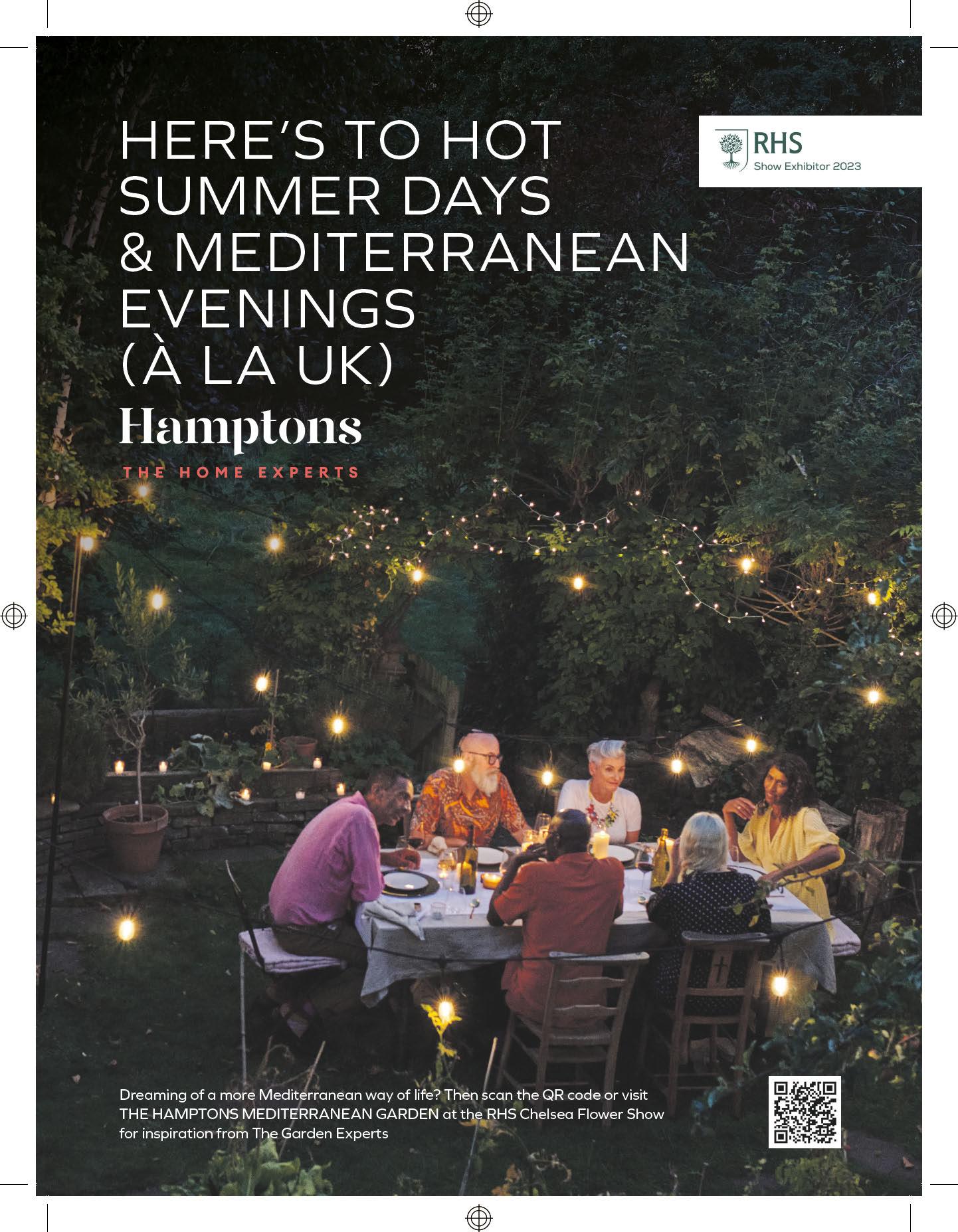


IN the 70 years between the coronations of Elizabeth II and Charles III, the London property market has changed beyond recognition. Not only has the capital swallowed up vast swathes of its neighbouring counties—Richmond-upon-Thames, Kingston-upon-Thames and Bromley, among many others—but rents and asking prices have soared well past any inflation-driven rise.
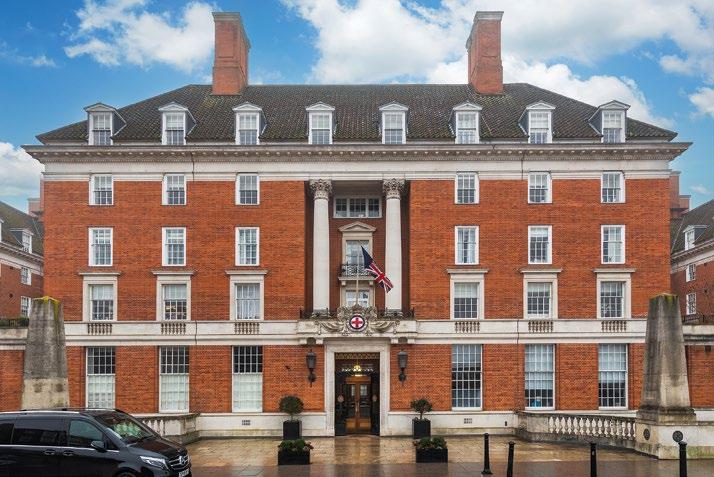
In a brief history of the British sales market between 1952 and 2022, Savills calculated that the average UK property has seen a 365% rise over those seven decades (after adjusting for inflation)—and London outperformed that. Percentages, however, can be too abstract to bring home exactly how much figures have shot up since the late Queen’s coronation, so here is a comparison between six Greater London homes that were advertised for sale or to let in COUNTRY L IFE in 1953 and their equivalents today. Before crying over the rather more affordable days of the past, however, a word of caution is in order: properties were generally less comfortable than they are now, not least because few had full central heating. There’s a price to pay for seven decades of home improvements.
Tucked in the To Let classifieds in the May 21, 1953, issue of C OUNTRY L IFE was an advertisement for a luxurious flat with two bedrooms, large living room and full service. The rent was £550 per annum—about £12,350 in today’s money, which roughly works out at £237 per week. ‘Rental value,’ explains Katie Heffernan, head of lettings in the Savills Mayfair office, ‘really depends on size, not only condition, so, today, a flat of this description could achieve anything from £1,400 to £2,000 per week.’ However, fixtures and furnishings for

Few Richmond buildings can compete with the venerable Trumpeters’ House, rising in Greek-temple glory on the site of Henry VIII’s old Royal Palace. In the early 1950s, the now Grade I-listed building was renovated and split into four sets of ‘Georgian Chambers’ that were sold individually. Two were advertised in the May 7, 1953, issue of C OUNTRY LIFE and the copywriter extolled the virtues of sunny panelled rooms, graceful proportions and period features—all matched by excellent ‘modern appointments’—that the Chambers offered ‘on one floor, without

the 1953 flat were available separately at £1,250—the equivalent of another £28,070 in 2023, which added significantly to the bill. By comparison, Savills are currently asking £1,795 per week for a newly refurbished, furnished 825sq ft flat in Park Street (above) with double bedroom, separate study, large reception room, kitchen and two bathrooms (020–7578 5101; www.savills.co.uk).

Rents and sale prices have increased vertiginously in the seven decades since the late Queen’s coronation, finds Carla Passino
On August 27, 1953, C OUNTRY L IFE featured an advertisement for a seven-bedroom, architectdesigned house close to Hampstead Heath, which had a 32ft drawing room, dining room, three bathrooms, kitchen and separate maid’s sitting room, plus two garages, all set in half an acre of land. The asking price was £15,000, which equates to about £337,000 in 2023. Quite the gap with today’s prices: now, notes Jeremy Gee, managing director at Beauchamp Estates, ‘any detached substantial property in half an acre of grounds close to Hampstead Heath would certainly be worth a minimum of £10 million’. His company is seeking £17.25 million for an architect-designed, beautifully finished house in a conservation area in Hampstead village (above). With 7,940sq ft of accommodation, it has five bedrooms, formal and informal reception rooms, a cinema room, a leisure suite and striking views of the London skyline (020–7499 7722; www.beauchamp.com).



A ‘country house in town’ was how an advertisement in the November 26, 1953, issue of C OUNTRY L IFE touted a delightful house with an established garden and paved courtyard in St John’s Wood. It had four bedrooms, three reception rooms and one bathroom laid across two floors, plus three garages topped by a twobedroom flat. Offered on a 70-year lease, with a ground rent of £69 (about £1,550), it had an asking price of £9,500, which is about the same as £213,340 in 2023. Today, Kinleigh Folkard & Hayward are seeking £3.5 million for a two-storey cottage (below) with four bedrooms, three reception rooms and 1,936sq ft of accommodation, set in a private garden in Greenberry Street, off St John’s Wood High Street (020–8131 7803; www.kfh.co.uk).
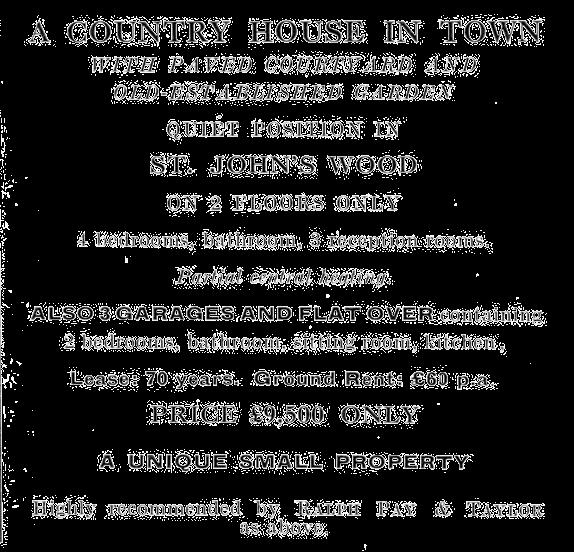
of £45 (about £1,010). Although not entirely comparable, when the flats in Trumpeters’ House were last sold in 2019, they fetched between £717,500 and £1.16 million. A flat at another Richmond landmark, the Grade IIlisted Star & Garter building (left) that sits high above the Thames, is for sale with Knight Frank, with an asking price of £800,000 (for a 991-year lease). Beautifully finished, it has one bedroom, an open-plan living and dining room with bespoke kitchen, 530sq ft of living space and access to communal facilities ranging from an indoor pool to treatment rooms and a cinema (020–8939 2805; www.knightfrank.co.uk).
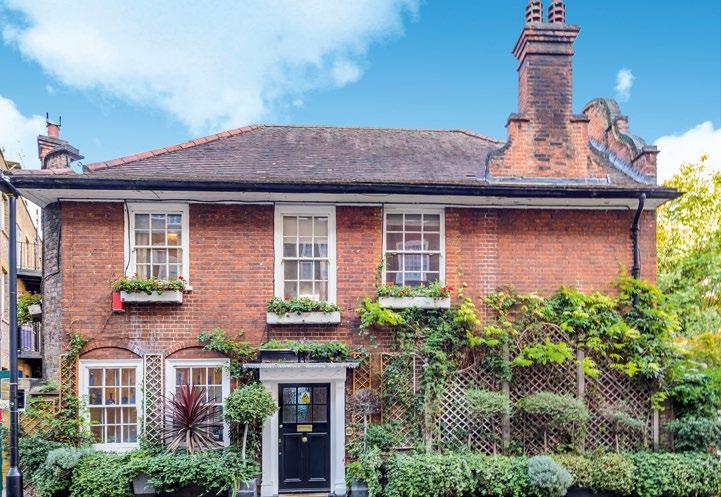
A ‘modern bijou residence’ is how selling agents Hillier, Parker, May and Rowden advertised, in the December 10, 1953, issue of COUNTRY LIFE, a house built in Wimbledon after the Second World War. Sold in ‘first-class condition’, it is the closest it gets to the standards of today, with four main bedrooms (plus another for ‘the maid’), three reception rooms, two bathrooms, a cloakroom and central heating throughout. Unlike most contemporary London houses, however, it also came with a sizeable
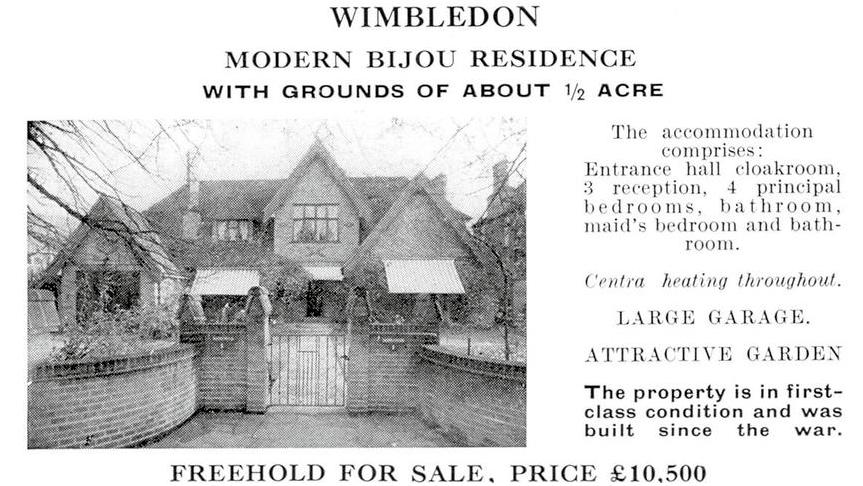
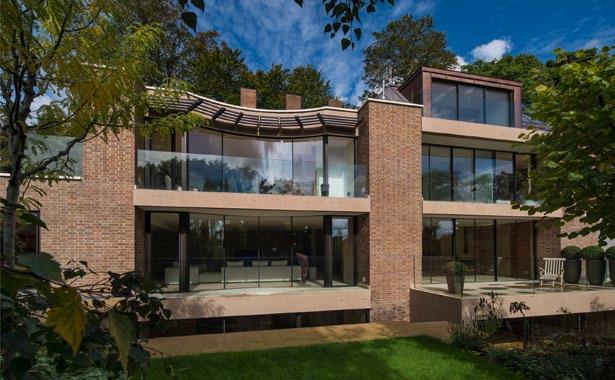
half-acre garden, all at an asking price of £10,500 (just under £236,000 in 2023). Alex Philo, head of sales at Knight Frank’s Wimbledon office, says prices are highly dependent on location, but ‘from the look of the 1953 advertisement, it is a style that you see with houses on the Drax Estate in SW20. A good period family house here with a half-acre garden would probably range from £5 million to £7 million, depending on size’. Currently, Knight Frank are seeking £3.25 million for a delightful 3,537sq ft house (left) with five to six bedrooms, three reception rooms and a landscaped garden in SW20 (020–8946 0026; www.knightfrank.co.uk).


THE skies above Denham aerodrome will be busier than usual in the weeks ahead as some of the world’s richest businessmen jet in to view stately, Grade Ilisted Denham Place. Set in 43 acres of Capability Brown-designed parkland overlooking picturesque Denham village in Buckinghamshire, the property is now on the market with a guide price of £75 million through joint selling agents Beauchamp Estates (020–7499 7722), Knight Frank (020–7861 1065) and Savills (020–7409 8881). The estate is being offered for sale lock, stock and barrel, including all furniture and fittings,
much of which has been commissioned by the current owners or painstakingly sourced from around the world.
There have been only seven owners of Denham Place since Anglo-Saxon times, when Ulstan, a Saxon Thane, donated the manor of Denham to the Abbey of Westminster. In 1531, Sir Edward Peckham leased the Abbey land known as Denham Great Park on which, 10 years later, having acquired the lordship of the manor, he built the pile he called Denham Place.
According to an article in C OUNTRY L IFE (November 18, 1905), Denham Place passed
through various hands after the Dissolution of the Monasteries, before being acquired in 1673 by Sir Roger Hill, whose father, ‘like most of the Commonwealth officers of State or law, had amassed a large fortune’. It took Sir Roger the best part of eight years to build his house, which he completed in 1700 at a cost of £5,549 in the money of that day. In 1773, Lancelot ‘Capability’ Brown created the Grade II-listed parkland.
The ‘lofty and spacious old mansion’ stands ‘just above the village on a long flat area by the Misbourne stream, which the designer of the house, or possibly his predecessors, dammed
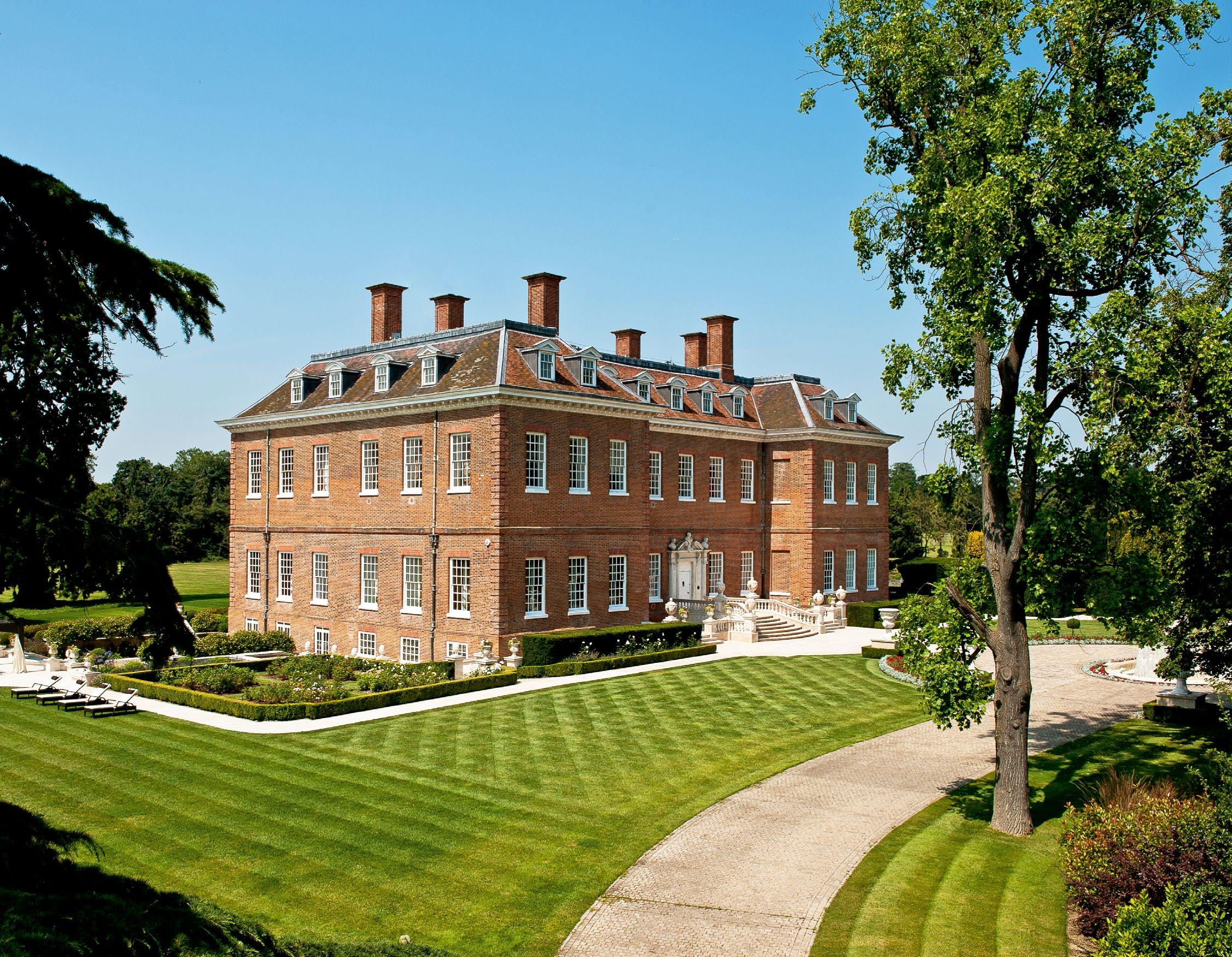
Short of acquiring a royal palace, there is ‘nothing of this grandeur or provenance so close to central London’Denham Place, Buckinghamshire, completed in 1700 and little altered, is surrounded by 43 acres of Capability Brown parkland. £75m
where it leaves the gardens, and so obtained a broad and straight but flowing sheet of water, filled with long tresses of water-weed combed out by the current… and inhabited by the famous Denham trout.’ The ‘large and imposing’ house is described as being ‘all in one piece. From the basement to the splendid cornice and upwards past the dormer windows to the roof, there is not a brick or a moulding that has been replaced or altered’.
Still largely unaltered, Denham Place remained in the hands of the Hill family and their descendants, during which time it was rented to a series of distinguished tenants. From 1834–44, it served as a royal residence for Joseph-Napoleon Bonaparte, the exiled former King of Naples, and his brother, Napoleon-Jerome, Prince of Montfort and King of Westphalia, following the defeat of the French Emperor. From 1853–1913, the estate was the English country retreat of the American financier and banker J. P. Morgan.
In 1930, Denham Place was acquired by Lord Robert Vansittart, who was permanent under-secretary at the Foreign Office from 1930 to 1938, and his heiress wife, Sarita. The couple were close friends with the film producer Alexander Korda, helping to support the nearby Denham Film Studios during its heyday between 1936 and 1952. Between 1960 and 1977, Denham Place was leased by Harry Saltzman, co-producer of the first nine ‘James Bond’ films at nearby Pinewood Studios. Following Lady Vansittart’s death in 1980, the house was converted into a corporate headquarters until its purchase in 2000 by India’s Jatania family, the current vendors.
Following an eight-year restoration project overseen by English Heritage and the Georgian Group and led by interior designer Alexander Kravetz, who has worked on some of the world’s most luxurious hotels, private houses and estates, the grand,

28,525sq ft manor house has been transformed into a sumptuous private palace, with 12 reception rooms, 12 bedroom suites, 14 bathrooms, family and catering kitchens and a private chapel. In addition, the estate boasts 11,199sq ft of secondary buildings, including a Grade II-listed coach house with planning consent for conversion to a stateof-the-art spa, together with estate cottages, outbuildings and garaging.
Highlights of the interior include the drawing room with its hand-painted ceiling fresco, silk wall panels and curtains by the Gainsborough Silk Weaving Company, a handwoven carpet inspired by one that was seen in Buckingham Palace and custom-made chandeliers created by glass-makers SaintLouis. Also of note is the music room decorated with ornate gold-leaf plasterwork, the billiards room with its restored listed fresco depicting Denham village, and the chapel, now dressed as a sitting room, with panelling


brought from Hampton Court Palace in west London during the 1700s.
‘Short of acquiring one of the Crown Estate’s royal palaces, there is nothing of this grandeur or provenance to be found this close to central London,’ says James Crawford of Knight Frank, who underlines the allimportant location of Denham Place, 17 miles from Mayfair, 20 miles from the City, 30 minutes by car from central London and a few minutes’ drive from Denham Aerodrome by helicopter or private jet, with Heathrow airport a 15-minute drive away.
Still in leafy Buckinghamshire, Paddy Dring of Knight Frank’s country department (020–7861 1061) is handling the re-launch onto the market of charming, Grade II-listed Turville Grange in the village of Turville Heath, seven miles from Henley-on-Thames and 14 miles from High Wycombe. He quotes a guide price of £12.75m for the pretty 18thcentury house set in some 49 acres of gardens, grounds and heathland in a part of the Chilterns renowned for its beauty, where the presence of a number of substantial private estates ensures that the countryside thereabouts is maintained in immaculate order.
The Grange is described in its listing as a mid-to late-18th-century house ‘much refurbished, altered and extended circa 1890
for Stephen Smith, with further extensions in the 20th century’. A parallel wing to the rear was added by Walter Tapper in the 1900s. In the early 20th century, the Marquis and Marquise d’Hautpoul bought the house, added a further wing and erected lacy wrought-iron entrance gates given to them by Queen Alexandra, who was a close friend and a regular visitor.
the old tile roofs, and adding a Tuscancolumned loggia to one side.
By 1966, Brett had become the 4th Viscount Esher, with a fine country house of his own, and was happy to sell Turville Grange and its 51-acre estate to Jacqueline Kennedy’s younger sister, Lee Radziwill, and her husband, Prince Stanislas Radziwill, for £55,000. Renovations at the Radziwills’ country retreat continued with a floral re-design of the entrance hall by Renzo Mongiardino, who also decorated the couple’s London residence, with further contributions by stage designer Lila de Nobili and landscape designer Lanning Roper.

Some 50 years later, owners Lord and Lady Esher—he being a chairman of the National Trust, she an American heiress —asked their architect son, Lionel Brett, to improve the place. This he did with some distinction, adding, among other things, a splendid Georgian front-door surround, cutting several dormer windows through
Since the Radziwills’ day, the house has been owned by the family of a well-known American businessman, who has further improved the house and grounds. The elegant, two-storey, main house now offers some 8,000sq ft of friendly living space including Mongiardino’s reception hall, three principal reception rooms, a kitchen/breakfast room, various domestic offices and four bedroom suites, with two further bedroom suites off the nearby courtyard. Outside, in a quiet, tree-lined area of the grounds, the former pool house has been rebuilt to provide a further guest suite within a state-of-the-art gym and swimming-pool complex.
Renovations at the Radziwills’ country retreat continued with a floral re-design of the entrance hall by Renzo Mongiardino


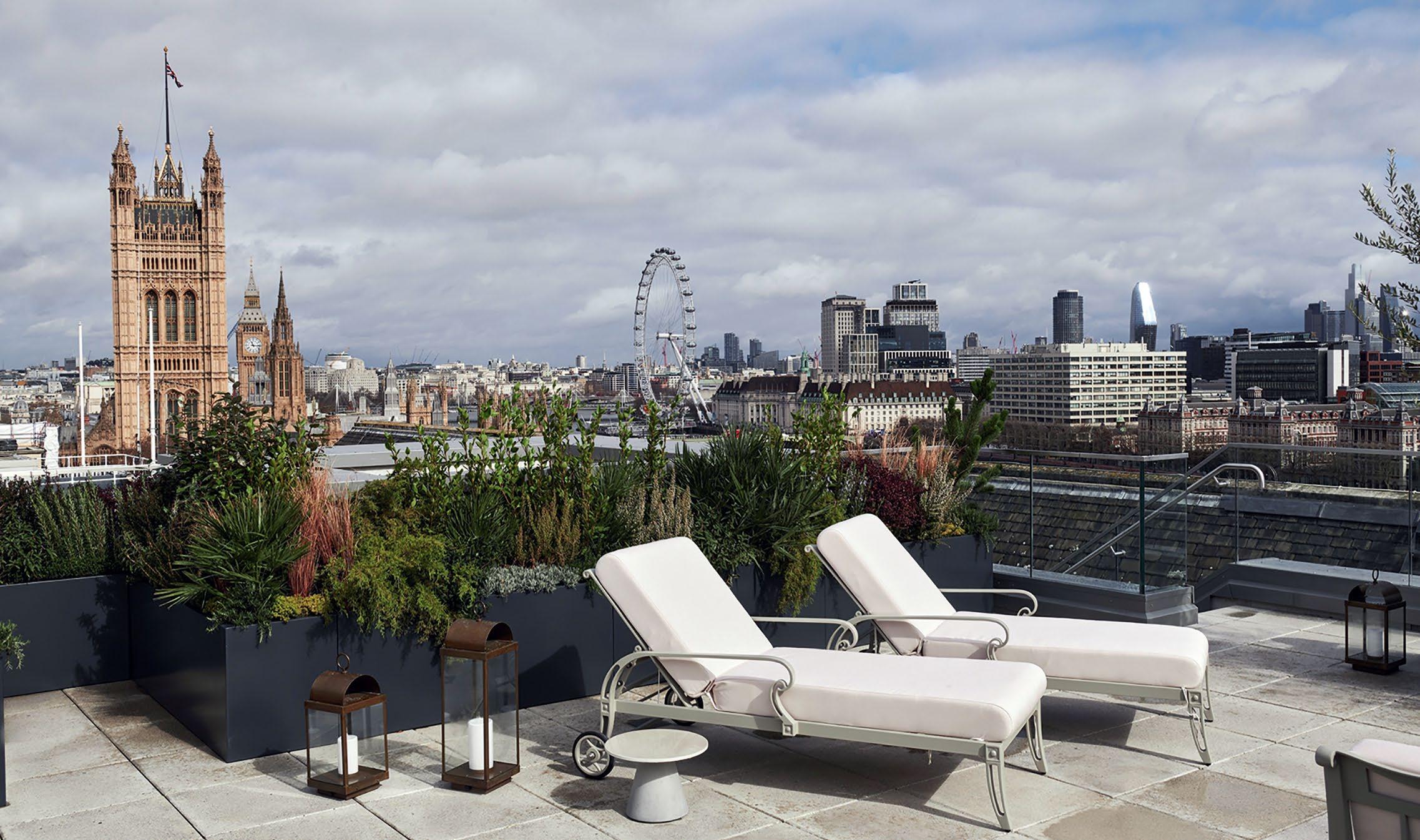
Westminster, SW1, £35 million

First constructed in 1929, 9 Millbank was the brainchild of Sir Frank Baines and was once home to Britain’s largest manufacturing company, Imperial Chemical Industries. These days, the neo-Classical Portland stone building has been redeveloped into a collection of living spaces, the highlight of which is the duplex penthouse apartment named The Astor. The apartment offers some 9,700sq ft of living space, five bedrooms and an 1,184sq ft, 360˚ roof terrace with unrivalled views over Westminster and London’s iconic landmarks, as well as interiors crafted by Goddard Littlefair. The property leans into the taste of its Roaring Twenties namesake, particularly in the 20ft-high reception room, with its meticulous carved architraves, golden domes and cornicing. It almost goes without saying at this point, but buyers will also have access to the many amenities of 9 Millbank, notably the gym, swimming pool, spa and cinema room. Berkeley Group/St Edward (020–3468 5332)
De Beauvoir, N1, £3.45 million

Situated in the elegant De Beauvoir neighbourhood of Hackney, this unassuming terraced house on Mortimer Road hides a wealth of interest behind its brick façade. Offering four bedrooms over 2½ floors, the home benefits from the many shops, cafés and restaurants of Southgate Road, as well as excellent transport links from Haggerston overground station. The real magic is inside, with natural light being the focus—none more so than on the lower ground floor, which benefits from a full-width rear glass extension housing the kitchen and dining room. It also offers access to the garden, designed by RHS Chelsea winner Darren Hawkes. The rest of the house is finished to an equally high standard, with a mix of modern and period features, such as original fireplaces, cornicing and ‘smart’ heating, lighting and sound systems. Savills (020–7354 6327)
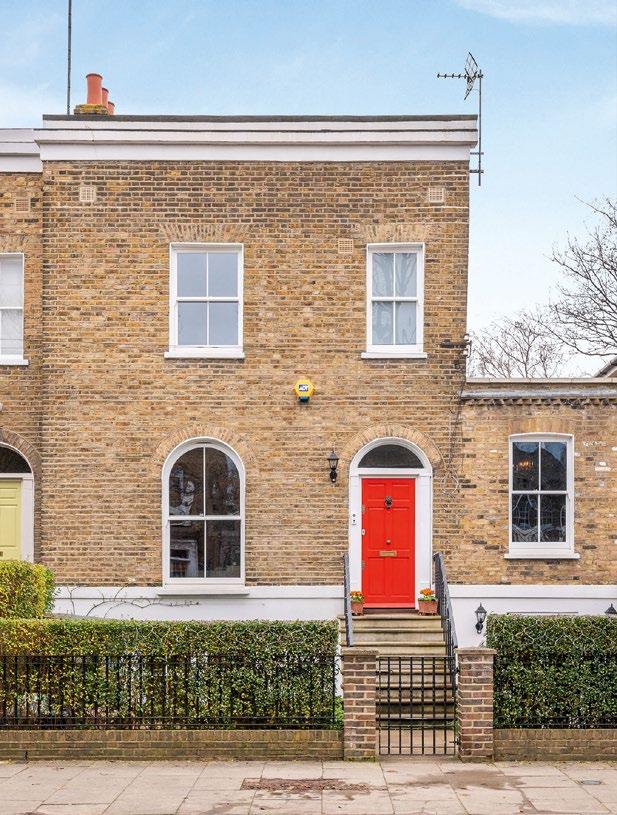
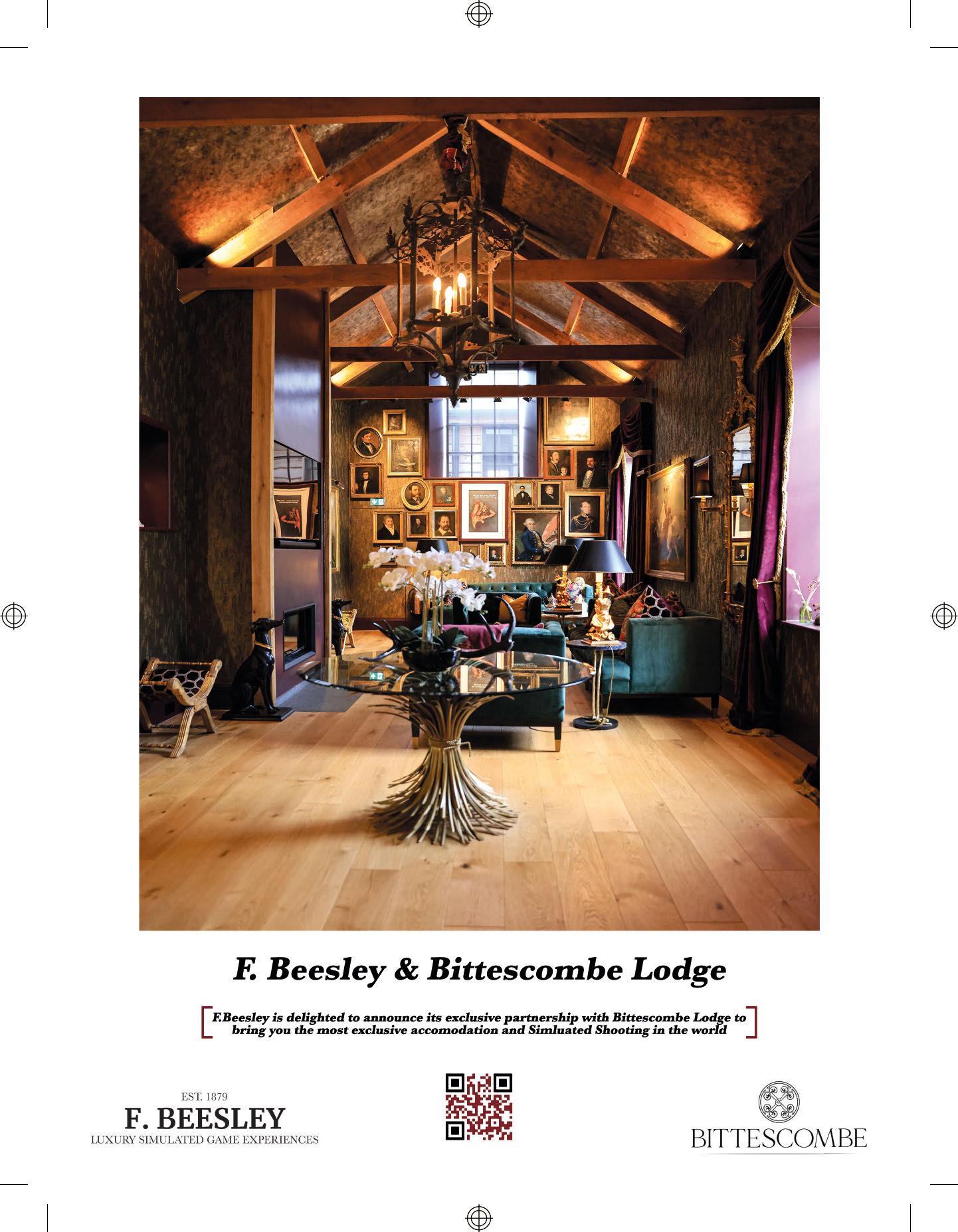
You might be forgiven for mistaking this property to have been airdropped from the Eastern Seaboard of the US— its white wooden cladding, shutters and porch certainly wouldn’t look out of place on Long Island or Cape Cod. Good news, then, for those who want to enjoy the New England aesthetic without leaving these fair isles, as this four-bedroom family home is situated in the elegant south-London suburb of Mount Gardens in Sydenham. Surrounded by leafy trees and with its own well-maintained gardens, Ash Tree Cottage is a characterful home that benefits from off-street parking, a detached studio/annexe and separate garden room. Inside, the property is finished to a high standard throughout, with four bedrooms on the first floor and a spacious open-plan kitchen/dining room on the ground floor—a beautiful slice of North America in the capital. Knight Frank (020–3815 9415)

A rare gem in the heart of SW1, this four-bedroom family home occupies a ‘sweet spot’ on the corner of Charlwood Street and Denbigh Street, giving the property a dual aspect, as well as access to the award-winning gardens of Eccleston Square. Together with its four bedrooms, the property enjoys three reception rooms over its five floors, all of which are finished to a very high and modern standard, providing all the modern comforts that city living requires. The property is also perfect for the international set, situated only half a mile from Victoria station and the Gatwick Express, with the shopping of the King’s Road one mile away. Jackson-Stops (020–7828 4050)

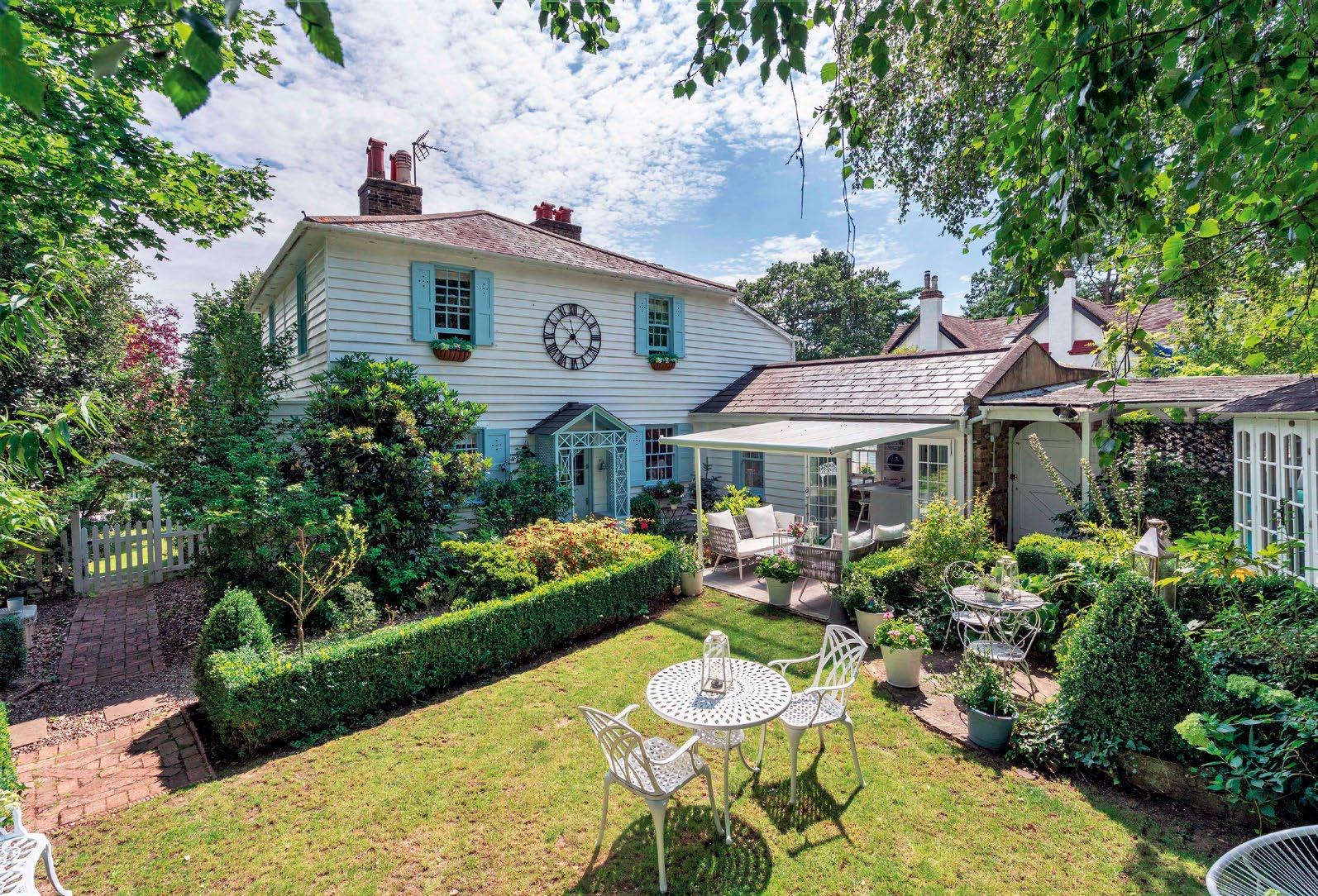
In the early 19th century, John Rennie’s London Docks in Wapping was completed and given a 21-year monopoly of imports of tobacco, rice, wine and brandy (except those from the ‘East’ and ‘West Indies’). Such an importation of wealth required the construction of two dock officials’ houses on either side to the entrance, which have remained unchanged for almost 200 years. One of the houses has come to the market for the first time in 25 years, offering the chance to own a slice of history, living in a Grade II- listed freehold house, with four bedrooms and more than 2,000sq ft of living space. This versatile home benefits from eight main rooms spread over four floors, as well as a generous attic, roof terrace and rear terrace. Many original features remain, such as high ceilings, sash windows, fireplaces and an open-well staircase. Buyers will also benefit from the large riverside garden, which is privately owned and maintained by the residents’ management company, and a beach, revealed twice a day at low tide. Savills (020–7456 6800)
